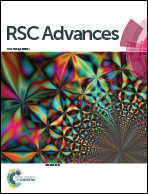Adjusting the stability of plasma treated superhydrophobic surfaces by different modifications or microstructures
Abstract
Plasma induced hydrophilization of superhydrophobic surfaces is highly-efficient, reversible and less destructive, and has therefore been applied into fields like fabrication of wettability patterns; however, plasma treated surfaces tend to recover back to their original wettability during storage, and different time stabilities are required for diverse applications. This paper focuses on regulating the time stability of plasma treated superhydrophobic surfaces by different surface modification methods or microstructures, and the recovery time could be adjusted as either 10 hours or more than 100 days under normal ambient conditions. These differences in recovery could also be observed in wettability patterns prepared by dissimilar methods. The adjustment methods developed should facilitate applications of plasma induced hydrophilization, especially for those that require rapid recovery or long-time stability.


 Please wait while we load your content...
Please wait while we load your content...